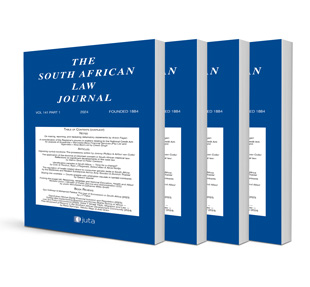
Transforming age-related capacity for fault in delict
Author: Emile Zitzke
ISSN: 1996-2177
Affiliations: LLB LLD (Pretoria)
Source: South African Law Journal, Volume 138 Issue 2, p. 369-398
https://doi.org/10.47348/SALJ/v138/i2a5
Abstract
For a wrongdoer to have ‘capacity for fault’ in the South African law of delict, it is widely accepted that the wrongdoer must possess the ability to distinguish between right and wrong (cognition) and the ability to act in accordance with that appreciation (conation). One factor that affects a person’s capacity for fault is youthfulness. There are two schools of thought on age-related capacity for fault in the South African law of delict. On the one hand, Van der Walt & Midgley are of the view that the common law stipulates the rules regulating this issue. In terms of this paradigm, the minimum age for capacity for fault is seven years. On the other hand, Neethling & Potgieter were, until very recently, of the view that the Child Justice Act should apply to the determination of a child’s capacity for fault. At the time of Neethling & Potgieter’s earlier writing, the minimum age for capacity for fault under the Act was ten years. Since June 2020, this age has been raised to twelve. In this article, the tension between these two schools of thought is analysed, and an attempt is made to resolve the tension through a proposal for a transformative, constitutional development of the common law of delict.